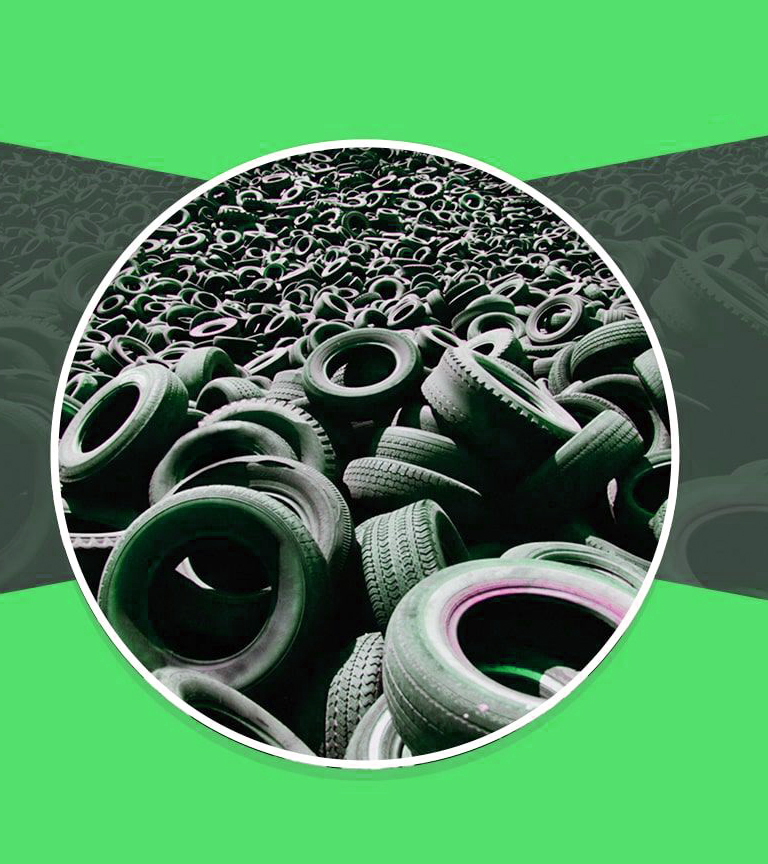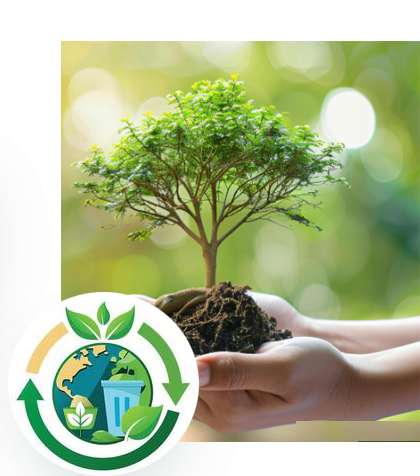Types of Tyre Recycling
Mechanical Shredding
Mechanical shredding is a primary method of tyre recycling that involves shredding tyres into smaller pieces using specialized machinery. This process facilitates the separation of rubber, steel, and fiber components, resulting in shredded rubber materials that can be used in various applications such as playground surfaces, athletic tracks, and road construction.
Pyrolysis
Pyrolysis is an advanced thermal decomposition process where tyres are subjected to high temperatures in the absence of oxygen, leading to the breakdown of rubber into oil, gas, and carbon black. Pyrolysis offers a sustainable approach to tyre recycling, yielding valuable resources like fuel oil and carbon black that can be utilized in energy production and manufacturing industries.
Devulcanization
Devulcanization is a chemical process aimed at reversing the vulcanization of rubber, thereby enabling the regeneration of recycled rubber into a form suitable for reuse in the manufacturing of new tyres, rubber products, and asphalt.
Benefit of Tyre Recycling
India has established stringent standards and guidelines for data center infrastructure to ensure reliability, efficiency, and resilience. Some of the key standards and regulations governing data center infrastructure in India include:
TIA-942: Telecommunications Industry Association (TIA) standard for data center design and construction, covering aspects such as site selection, architecture, cabling, power distribution, cooling, and security.
IS 1893: Indian Standard code for earthquake-resistant design and construction of buildings and structures, which is relevant for data center facilities located in seismic zones.
ISO 27001: International Organization for Standardization (ISO) standard for information security management systems (ISMS), providing guidelines and best practices for implementing security controls and managing risks related to data protection and privacy.
BIS: Bureau of Indian Standards (BIS) certification for electrical, electronic, and IT products, ensuring compliance with Indian regulatory requirements and quality standards for data center equipment and components.
Types of India Data Centers:
India’s data center landscape encompasses various types of facilities catering to diverse needs and requirements. Some of the common types of data centers in India include:
Enterprise Data Centers
Enterprise data centers are owned and operated by individual organizations to support their internal IT infrastructure and business operations. These data centers are typically located on-premises or within corporate facilities and are used for hosting business applications, databases, and critical systems.
Colocation Data Centers
Colocation data centers provide shared infrastructure and facilities for multiple tenants to host their IT equipment and applications. These data centers offer rack space, power, cooling, and network connectivity services on a rental basis, allowing businesses to outsource their data center needs while retaining control over their hardware and software.
Cloud Data Centers
Cloud data centers are operated by cloud service providers to deliver on-demand computing resources, storage, and applications over the internet. These data centers leverage virtualization, automation, and scalable architectures to offer cloud services such as Infrastructure as a Service (IaaS), Platform as a Service (PaaS), and Software as a Service (SaaS) to businesses and consumers.
Hyperscale Data Centers
Hyperscale data centers are large-scale facilities built and operated by technology giants such as Amazon Web Services (AWS), Microsoft Azure, and Google Cloud Platform (GCP) to support their cloud computing and internet services. These data centers are characterized by massive scale, high-density computing, and hyper-efficient infrastructure designed to handle vast amounts of data and workloads.
Documents Required for Certification of Tyre Recycling Plant
Environmental Impact Assessment (EIA) Report
An EIA report assesses the potential environmental impacts of establishing and operating a tyre recycling plant, including air and water pollution, noise levels, waste management practices, and regulatory compliance.
Business Plan
A comprehensive business plan outlines the objectives, operational strategies, market analysis, financial projections, and risk management measures of the tyre recycling plant, demonstrating its feasibility and viability to regulatory authorities and potential investors.
Permit and Licensing Documentation
Various permits and licenses are required to legally operate a tyre recycling plant, including environmental permits, zoning permits, waste management licenses, and occupational health and safety certifications.
Compliance Certificates
Compliance certificates demonstrate that the tyre recycling plant complies with relevant regulations, standards, and guidelines concerning environmental protection, occupational safety, waste disposal, and quality control.
Tyre Recycling Plant Registration
The registration process for a tyre recycling plant involves submitting the necessary documentation, including the environmental impact assessment report, business plan, permit and licensing documentation, and compliance certificates, to the relevant regulatory authorities or government agencies responsible for overseeing waste management and recycling facilities. Upon approval and verification of the documents, the tyre recycling plant will be registered and granted the necessary permits to commence operations legally.
Tyre Waste Recycling Process
The tyre waste recycling process encompasses several stages, each designed to extract valuable materials from old or worn-out tyres while minimizing environmental impact:
Collection and Sorting
Old tyres are collected from various sources such as automotive repair shops, tyre retailers, and waste management facilities, then sorted based on factors like size, condition, and type.
Pre-treatment
Pre-treatment processes such as shredding, debeading, and decontamination remove metal components, textile fibers, and other contaminants from the tyres to prepare them for further processing.
Recycling Techniques
Tyre recycling techniques such as mechanical shredding, pyrolysis, and cryogenic grinding are employed to break down the rubber into reusable materials such as rubber granules, fuel oil, carbon black, or reclaimed rubber.
Product Manufacturing
The recycled rubber materials obtained from tyre recycling are used to manufacture a wide range of products including rubber mulch, playground surfaces, athletic tracks, asphalt additives, and new tyres, depending on their quality and specifications.
]Waste Management
Any residual waste generated during the recycling process is managed and disposed of in an environmentally responsible manner, following regulatory guidelines and best practices to minimize pollution and ensure sustainability.
In conclusion, tyre recycling offers a sustainable solution to the challenges of waste tyre disposal, environmental pollution, and resource scarcity. At Ewour Waste Management, we are committed to driving innovation, promoting sustainability, and creating value from waste tyres through our comprehensive tyre recycling solutions. By embracing advanced recycling technologies, adhering to stringent quality standards, and fostering collaborative partnerships, we can build a greener, more resilient future for generations to come. Join us in our mission to make a positive impact on the environment and society through responsible tyre recycling practices.
Validity of Tyre EPR Certificate
The Tyre EPR Certificate remains valid as per CPCB guidelines and requires timely renewal, periodic reporting, and full compliance with EPR scores to ensure legal operations in India.
- Validity Period: Typically valid for 5 years from the date of issue.
- Issued By: Central Pollution Control Board (CPCB), India.
- Renewal: Must be renewed before expiry to continue lawful operations.
- Reporting: Annual returns and compliance reports must be submitted as per CPCB norms
Tyre EPR Registration Process
Tyre EPR enrollment involves completing the enrollment form and meeting environmental compliance conditions for proper waste operation.
- Documentation: All required details and documents are collected and reviewed for accuracy.
- Filing the Application: Once verified, an online EPR application is submitted.
- CPCB Assessment: The Central Pollution Control Board (CPCB) evaluates the application. Any concerns or errors are addressed.
- Grant of EPR Authorisation:Upon approval, the certificate is issued within 30 days. Producers must then implement an EPR action plan to meet their targets.
Key Benefits of Tyre EPR Registration
- Environmental Protection: Encourages responsible waste management and reduces illegal dumping.
- Resource Conservation
- Energy Efficiency: Recycling consumes less energy than manufacturing new tyres.
- Job Creation: Boosts employment through recycling and waste processing diligence.
- Regulatory Compliance: Ensures adherence to CPCB.
Suspension and Cancellation of Tyre Waste EPR Registration
-
The Central Pollution Control Board may cancel or suspend the registration under the following conditions:
- Document is found to be false or misleading.
- In case of non-compliance with EPR obligations.
- Environmental compensation may be imposed.
- A 15-day notice period is given before any action is taken.
Important Points to Remember
- Before the expiry, Renewal can be applied for 60 days.
- Registration takes around 30 working days.
- Non-compliance can result in cancellation OR suspension by the Central Pollution Control Board.
Why Choose Ewour for Tyre EPR Registration?
-
We simplify compliance. Our team offers expert assistance in Tyre EPR Registration from documentation to certification, pan-India.
- One-Stop Corporate Solution
- PAN India Services
- Free Expert Assistance
- Google-Verified Business
- Dedicated Support Staff
- Money-Back Guarantee
Tyre EPR Registration in India plays a vital part in promoting responsible and sustainable tyre waste operations. By icing proper collection, Tyre recycling, and disposal, it helps reduce environmental hazards and supports a greener frugality. Directors and related stakeholders must comply with these regulations to produce a cleaner future.










